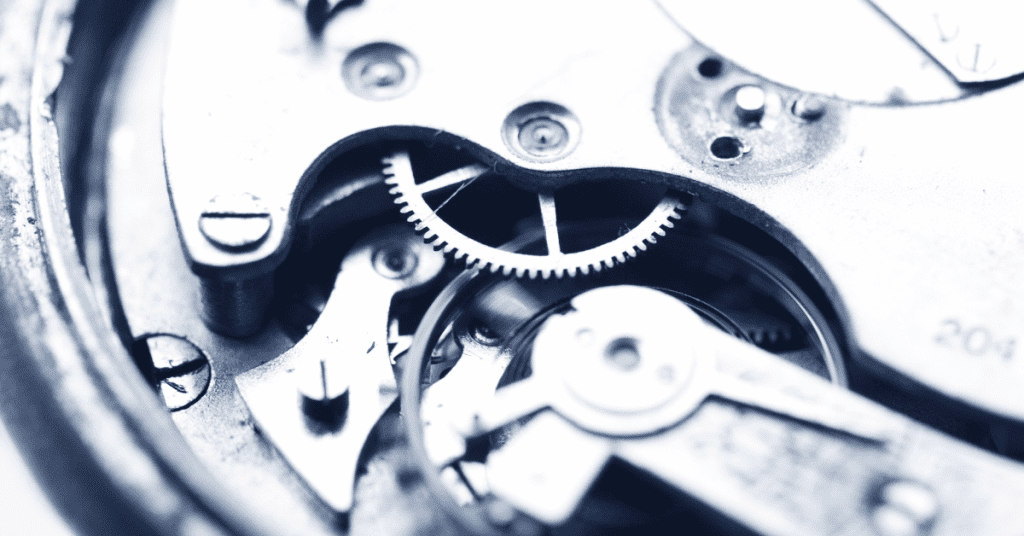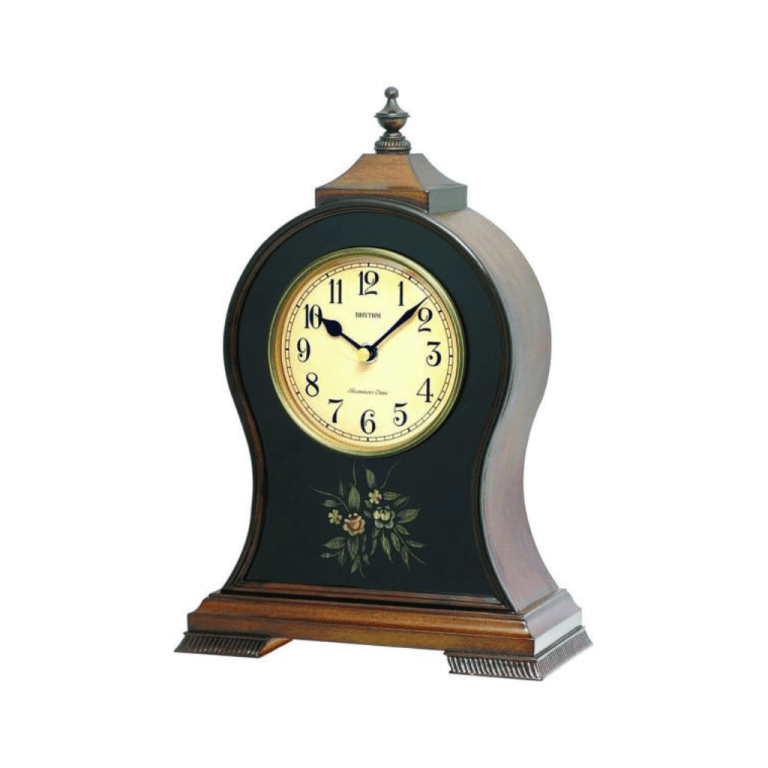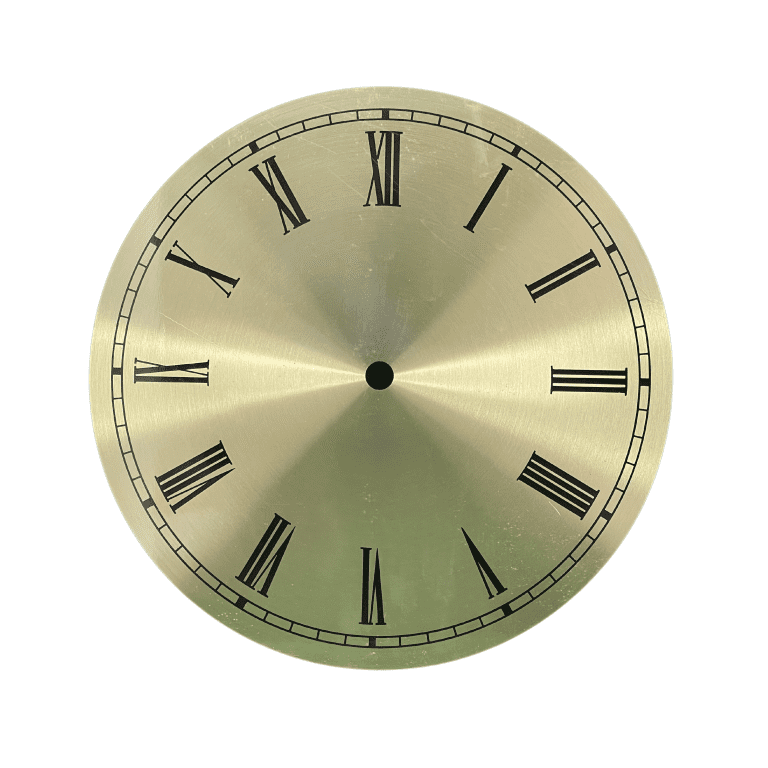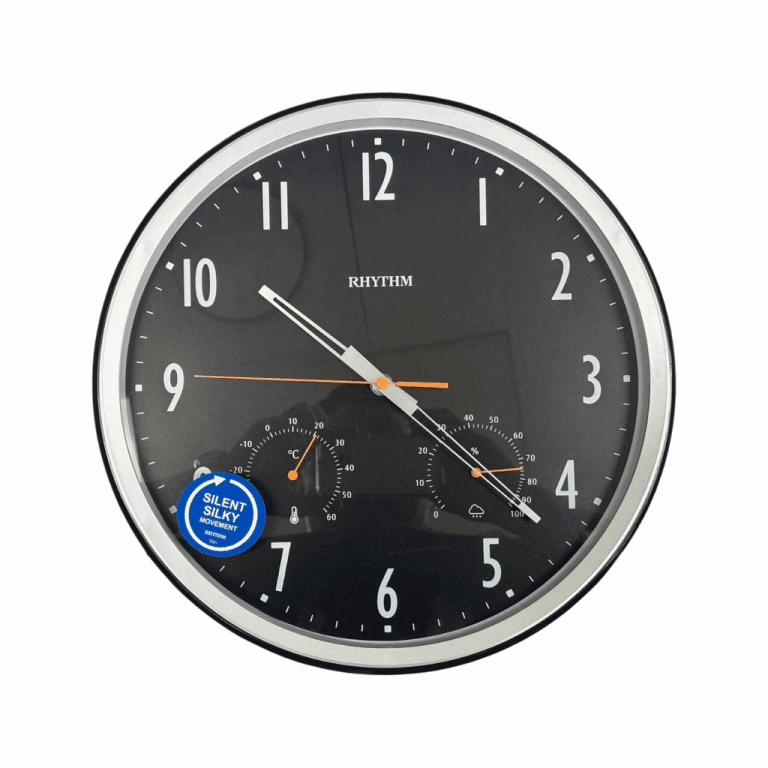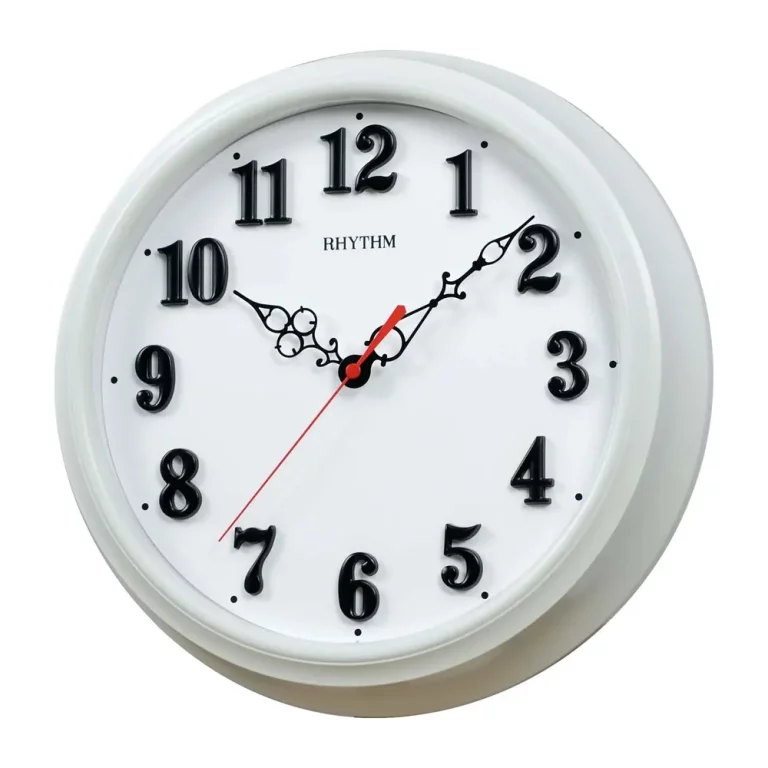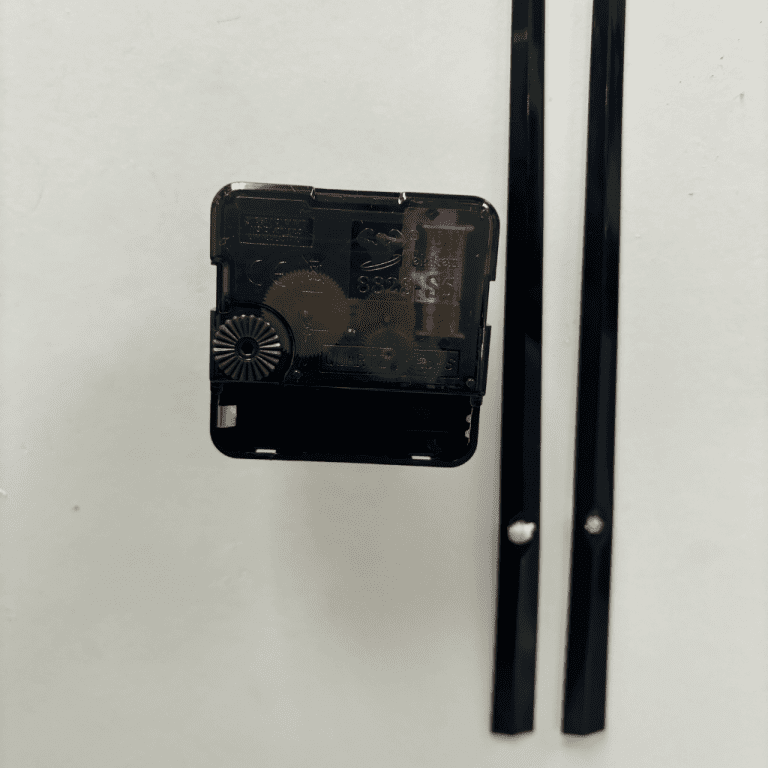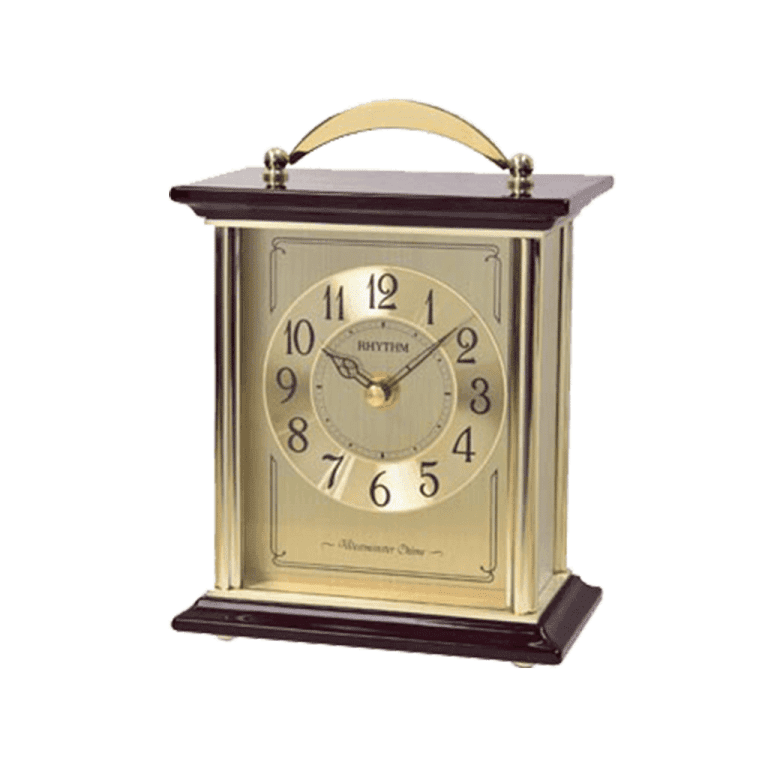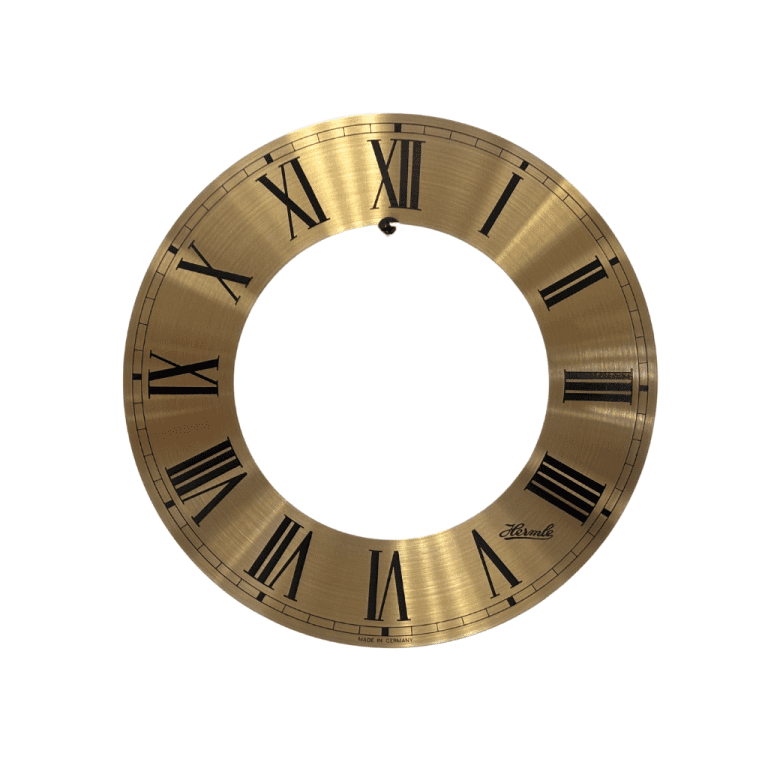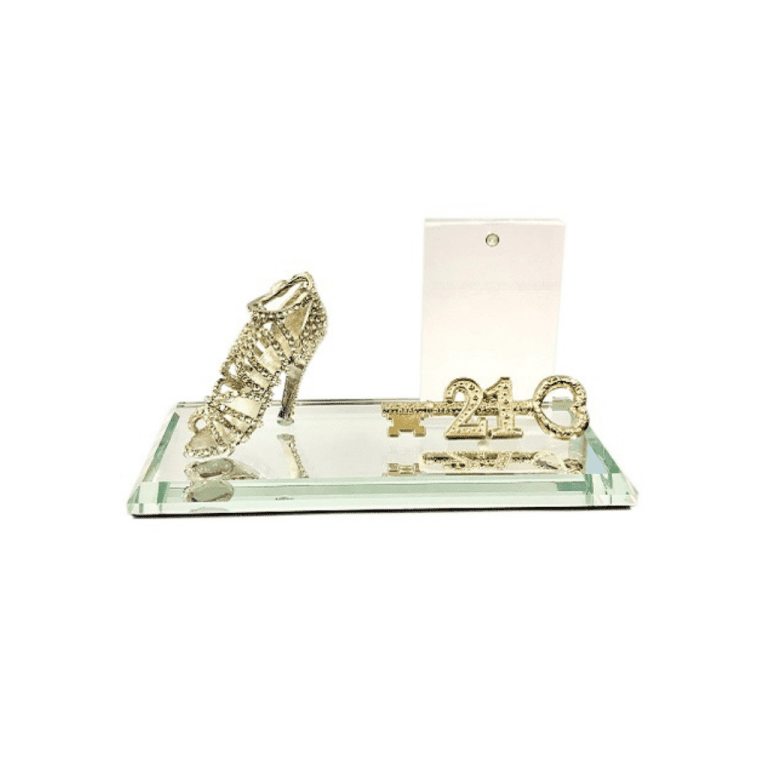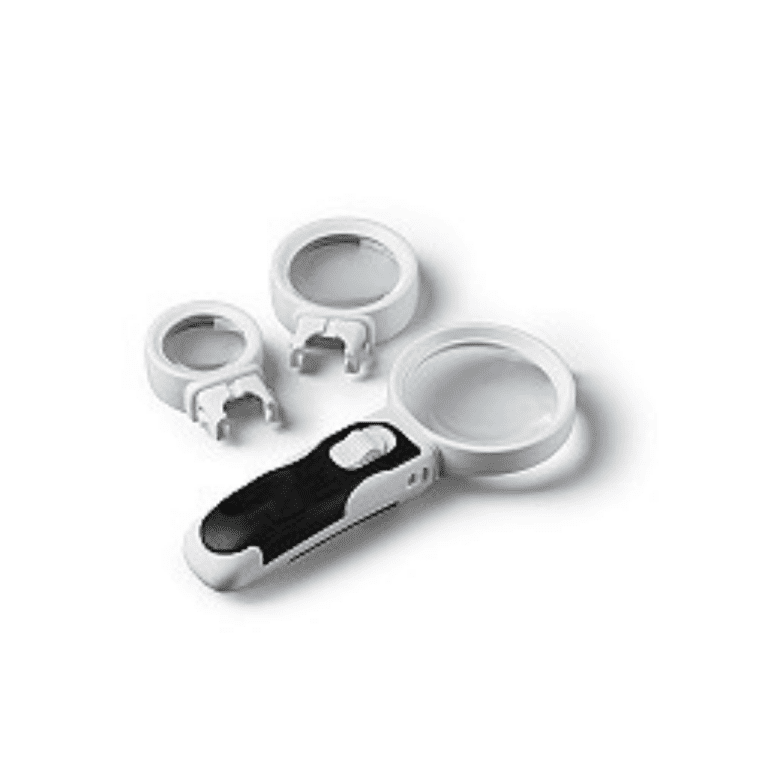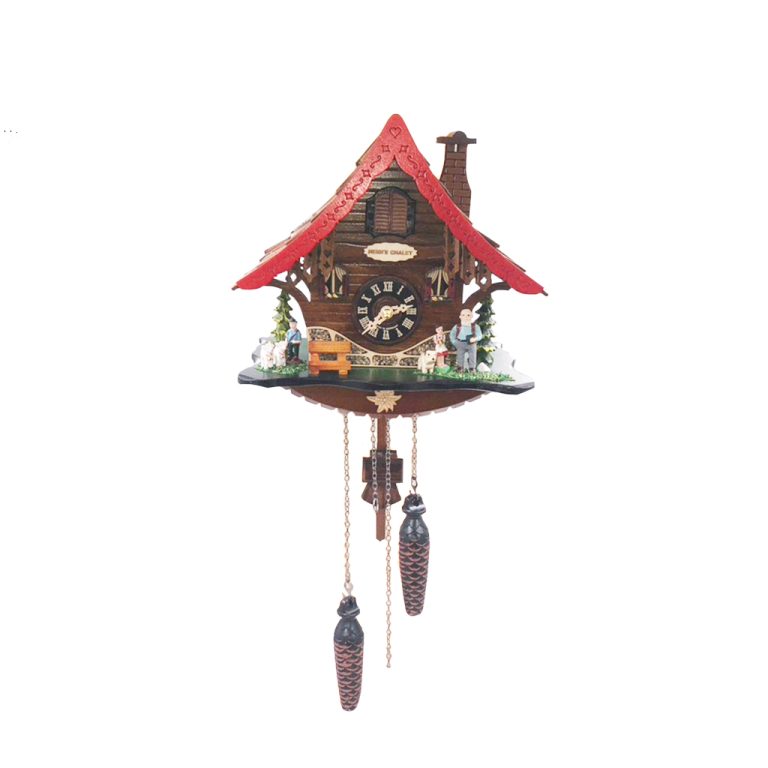Basic Clock Anatomy
Just as medical doctors must study anatomy and physiology, so must the horologist learn the inner workings of clocks. While there are many kinds of mechanical clocks–each with its own specialized parts and processes–there are key components that they all have in common, including: Casings, Faces, Dials, Hands, and Movements.
Starting with the simplest and easiest to identify, we begin with the encasement—casing or case for short. The clock casing is the first thing we notice when we see a clock. It is a protective shell that surrounds the delicate inner workings of the clock, and is typically made of a strong, durable material such as wood, metal, or even stone. Casings can take many forms, and come in all shapes and sizes. Since they are one of the most visible parts of a clock, they are used to help identify the history and origin of a clock. Clock casings may be large or small, somber or whimsical. Also, they are often highly decorative and may be considered a work of art in themselves
Next, we have the face. Not to be confused with the dial, the face of a clock is the part that is directed forward. The face may be of any shape–including round, square, rectangular, house-shaped, or even cat-shaped. The dial is the round part of the face that displays the hands and numbers. The purpose of the dial is to make the time clearly visible to the viewer–for this reason, it is common to have a white porcelain dial with inset numbers filled with black wax. However, novelty clocks will often use more decorative color schemes–even though they are more difficult to read.
Hands of course point to the numbers on the dial, and are seated on a pin called the Hand Shaft. Clock Hands can take many shapes from a simple triangular sliver, to ornate arrows, or even the shape of human hands. The hand shaft extends through a hole in the center of the dial and attaches to the clock’s movement. The movement is comprised of the internal workings of the clock–the parts that move and keep pace with time.
Anatomy of a Movement
A Common Movement
The movement is the heart of the clock. It beats out the rhythm by which we tell the time. Many kinds of movements have been developed over the years–some driven by weights, others by springs, a few were even powered by combustion. However, they all have a few things in common: 1) The driver provides power for the clock; 2) The wheels are a set of gears that transfer energy through the clock; 3) The escapement acts as a switch to start and stop the release of energy from the driver to the wheels; and 4) The controller, which toggles the escapement at regular intervals to beat out a steady rhythm that is tuned to the passing of time.
Advertisement
The driving mechanism, or driver provides energy to the clock–modern clocks are mainly driven by electricity, but there have been clocks built to harness nearly all forms of energy. There have been steam powered clocks, gas driven clocks, and even nuclear clocks–but the majority of antique clocks run on mechanical energy stored in either springs, or weights. These common systems will be the primary focus of the remainder of this article.
Spring Power
A spring powered movement stores energy in an elastic strip of metal ribbon or wire that is pulled into a tight spiral–called the mainspring. Early spring driven clocks made use of free (exposed) mainsprings, but these could not store much energy and could not be wound very tight because the spring might twist and come unwound. This sudden burst of energy could damage other sensitive parts of the clock. Later mainsprings would be wound inside a metal tube–or barrel–to prevent it from twisting. These could house larger, more powerful springs that needed to be wound less often.
The mainspring attaches to the inside wall of the barrel, and to a fixed shaft in the center that attaches to body of the movement. When wound, the spring tightens around the shaft, and then pushes the barrel in a circle as it unwinds. The barrel itself attaches to the great wheel–which is the first gear in the gear train. The gears or wheels transmit power to the escape wheel (the last gear in the chain) and controller, which limit how much power can be released at a time, and which ultimately control the movement of the hands. These are complex works in themselves–with nearly a dozen precision parts, escapement and controller mechanisms deserve an entire section of their own.
Weight Drive
A weight-driven movement stores potential energy in a series of hanging metal weights, which pull on a chain and provide power for the system. These weights may be simple metal slugs, or they can be cast into various shapes–the pine cone being common. They typically consist of an outer casing made of polished metal, and an inner core made of a heavy material such as lead. Weights can be decorative, but are not typically treated as works of art.
The weights pull a chain or cable through a series of pulleys. The cord is attached to and wrapped around a cylindrical drum. The drum has a ratchet wheel that allows the weights to be wound up, while the hook or click pulls on the main wheel, causing it to turn. The whole mechanism serves the same purpose as the barrel and mainspring of a spring-powered clock.
Like a spring-powered clock, the main wheel connects into a gear-chain that transmits power to the escape-wheel and controller. Again, there are many kinds of weight driven movements, each with their own particular mechanisms. These are intricate machines, and each can be considered a work of art in its own right.
The Wheels
Regardless of what drives them, the wheels are perhaps the most iconic part of the clock movement–there is something mystical about watching all those little gears click and spin, ticking away the time…it is almost like the machine is alive. From the main wheel to the escape wheel, the drive chain transfers energy from the driver to the escapement.
The Escapement
All that pent-up energy needs somewhere to go–and that is where the escapement comes in. The escapement acts as a valve to gradually release the energy from the driving mechanism. This usually takes the form of a ratcheting wheel or toothed lever–the latter being the most common.
While this may sound simple, because all the energy of the system passes through the escapement, it is under constant stress. Also, it must be carefully engineered to avoid friction losses and prevent slippage. There have been many escapements developed over time, and the ones we have today are the result of hundreds of years of technical development. This is such an important piece of horology that improvement has never ceased, and we continue to develop new escapements even to this day.
The most commonly used escapement in mechanical clocks is the anchor, or more specifically the deadbeat escapement. Named for its shape, the anchor escapement has two lever arms, each with a tooth–or pallet–that hooks into the gearing of the escape wheel of the drive-chain. These are set at right angles, and a pendulum hangs downward between them, forming the iconic anchor shape.
As the pendulum swings back and forth, the pallets move in and out of the teeth of the escape-wheel, allowing it to turn a little bit each time. With each swing forward, one pallet slides out, the wheel turns, and the other pallet slides in; then the process reverses on the back swing. The classic “TIC-TOC” sound comes from this see-sawing of the pallets snapping in and out of the teeth on the escape wheel.
The Controller
The pendulum in the clock is a type of controller which toggles the escapement at regular intervals. It sets the pace at which the clock runs–aligning the movements of the clock with that of the earth and stars. It must provide a steady and consistent oscillation for the clock to tell accurate time.
The form a controller will take depends upon the type of escapement used. Pendulums are used with anchor escapements because the pull of gravity is constant, allowing a weight to swing back and forth at a known rate. However, pendulums require a large amount of space and don’t work properly if bumped or moved.
Small clocks and watches do not have room for long pendulums. And because they are often bumped and moved about, they need a different kind of control mechanism. Thus, they make use of a special flywheel known as a balance wheel. This is a sophisticated mechanism that uses a wheel that rotates back and forth between two springs–called hairsprings. The combination of the weight of the wheel and the tension of the springs determines the speed at which it oscillates.
There is Much, Much, More…
This article merely scratches the surface when it comes to the parts and operations of mechanical clocks. Clocks have been around for thousands of years, and have steadily evolved during that time. Timepieces continue to fascinate engineers, and to this day, they continue to develop new and fascinating ways to measure the heart beat of the universe–to put time in a box for all of us to enjoy.
Credited to:https://antiquemechanicalclockrepair

